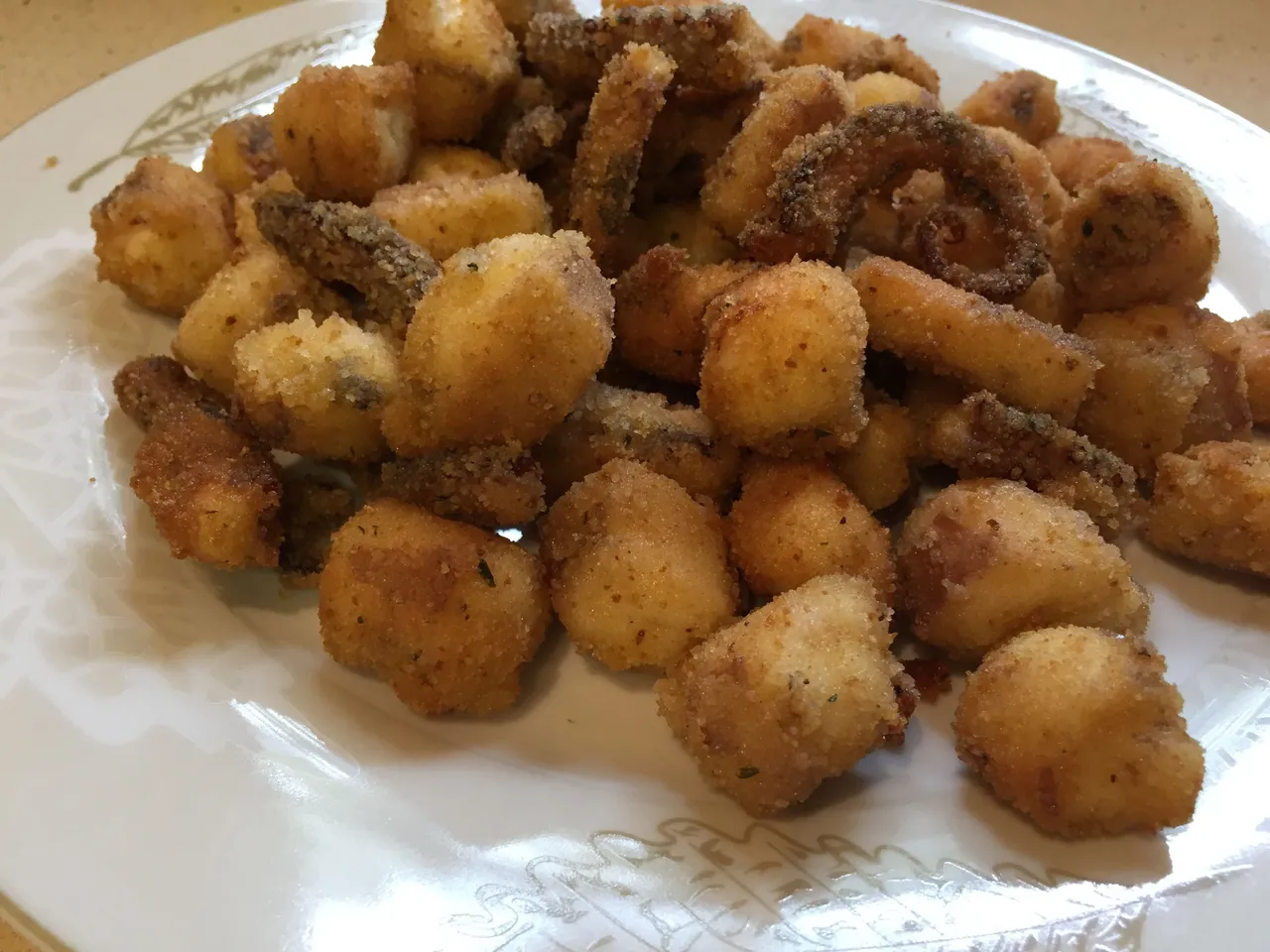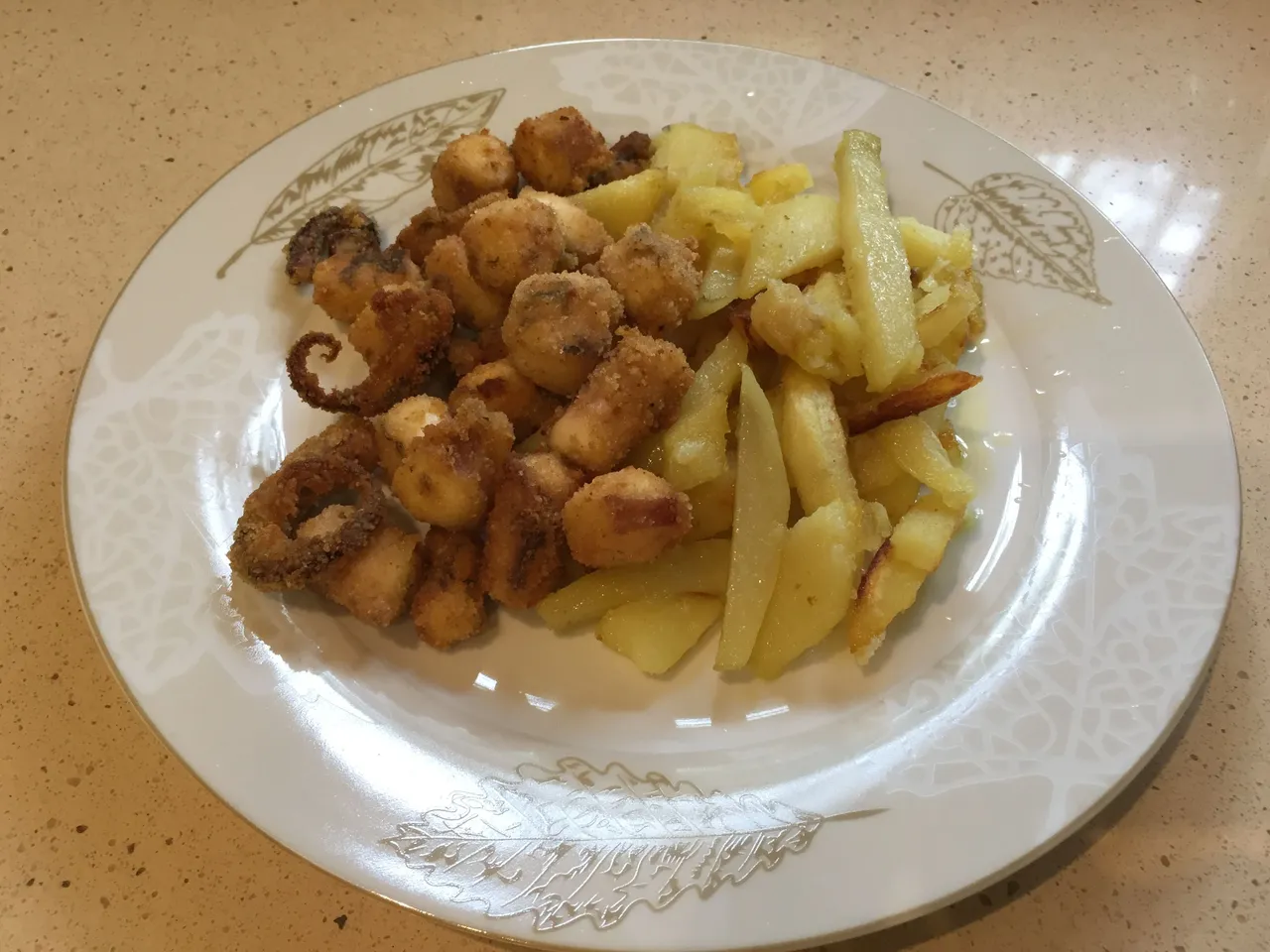En Málaga y alrededores es muy típico consumir el pescado frito. Desde la antigüedad cuando se saca el copo, que es un arte donde se usa una red llevada a varias decenas de metros por barcas y sacada a mano, los pescados más pequeños que no son fáciles de vender, solían ser consumidos por las familias de los pescadores haciendo una fritada de estos pescados variados, también llamada morralla.
En tiempo de escasez me contaba mi madre que se la daba una segunda vida al pescado cocido que no se había consumido en casa, harineado o empanado.
Actualmente se fríe el pescado muy fresco porque queda muy rico y jugoso. Esta receta de pulpo es diferente a las típicas de asarlo o a la gallega.
In Malaga and the surrounding area it is very typical to eat fried fish. Since ancient times, when the "copo", which is an art that uses a net carried several tens of metres by boats and pulled by hand, the smaller fish that are not easy to sell, used to be consumed by the families of the fishermen making a fritada of these various fish, also called "morralla", or "morralla".
In times of scarcity, my mother used to tell me that cooked fish that had not been eaten at home was given a second life, flour-coated or breaded.
Nowadays, the fish is fried very fresh because it is very tasty and juicy. This octopus recipe is different from the typical roast or Galician recipes.
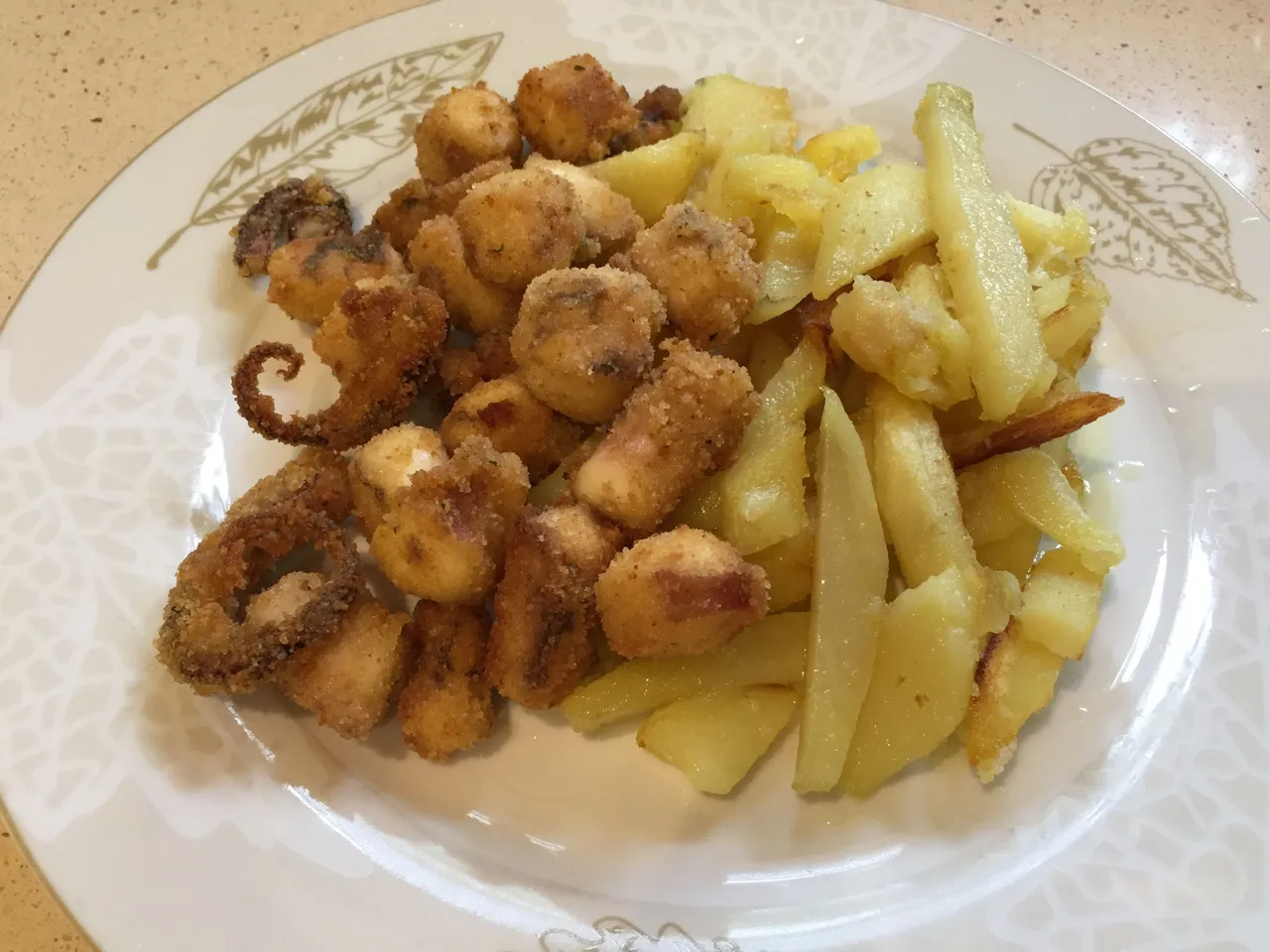

Para ello necesitamos un pulpo de un buen tamaño o varios pequeños. El precio actualmente del pulpo crudo en España está por los diez euros el kilogramo. Suelo comprarlo congelado, pero si lo encuentro fresco del mercado lo dejo congelar varios días para que las fibras se partan y a la hora de la cocción me asegure que quede tierno. Cuando no habían congeladores para poder meterlos, se solían apalear buscando el mismo resultado a la hora de cocinarlo.
For this we need an octopus of a good size or several small ones. The current price of raw octopus in Spain is around ten euros per kilogram. I usually buy it frozen, but if I find it fresh from the market I let it freeze for several days so that the fibres break down and when it comes time to cook it I can make sure it is tender. When there were no freezers to put them in, they used to be beaten to achieve the same result when cooked.
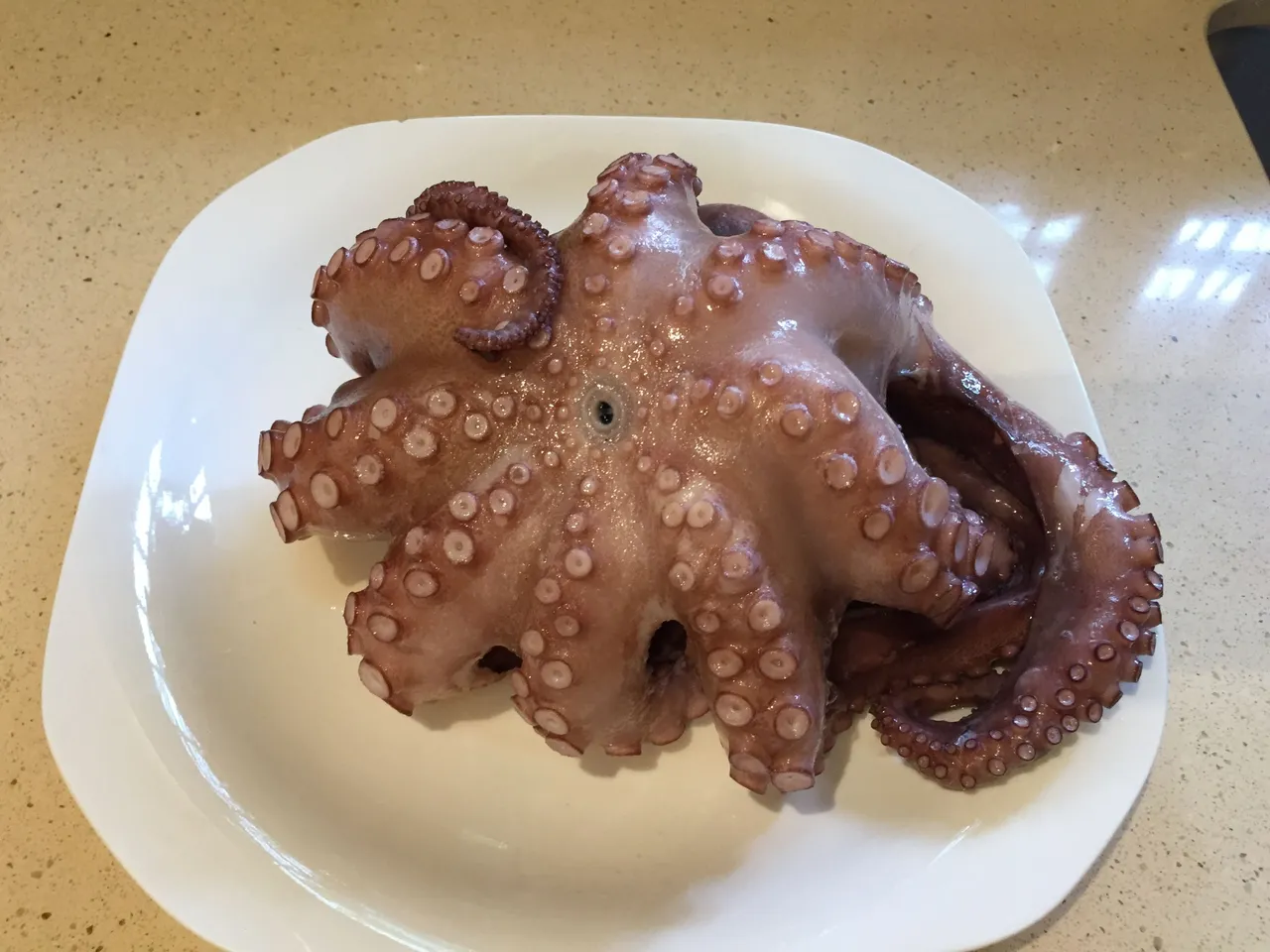

Ahora se llena una olla de agua y se deja calentar hasta la ebullición. Hay diferentes formas o teorías de cocerlo. Unos me explicaron que lo dejaban en el agua hasta la ebullición sacándolo rápidamente cambiándole el agua y volverlo a cocer el tiempo necesario. Otros me explican que con el agua hirviendo lo meten y sacan del agua tres veces y lo dejan dentro cocer. Yo he probado las dos formas y si está previamente congelado sale perfecto de cualquier manera.
Now a pot is filled with water and heated to boiling point. There are different ways or theories of cooking it. Some explained to me that they leave it in the water until it boils and take it out quickly, change the water and cook it again for as long as necessary. Others explained to me that they put it in and take it out of the boiling water three times and leave it inside to cook. I have tried both ways and if it is previously frozen it comes out perfect either way.


El tiempo de cocción que le doy es de veinte minutos por kilogramo. Más tiempo te quedas sin pulpo y menos te arriesgas de que quede duro. Una vez pase el tiempo lo saco y le quito la gelatina y los tentáculos y parte de la piel.
The cooking time I give it is twenty minutes per kilogram. Any longer and you run out of octopus and you run less risk of it becoming tough. Once the time is up, I take it out and remove the gelatine, the tentacles and part of the skin.
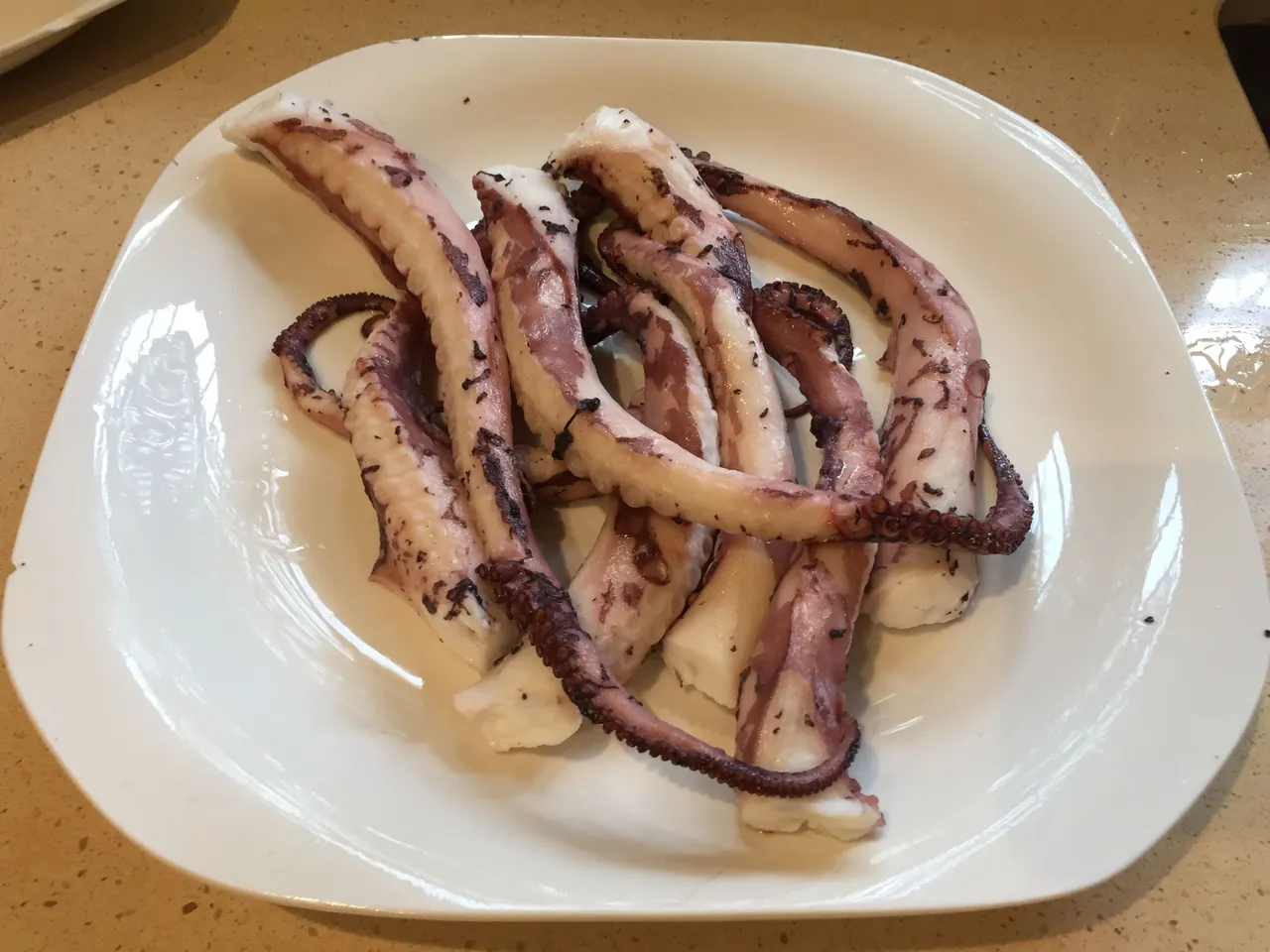

Luego corto las patas a trocitos. Esta parte del proceso es peligrosa, porque entran ganas de comértelo sin llegar a freírlo.
Then I cut the legs into small pieces. This part of the process is dangerous, because you feel like eating it without frying it.
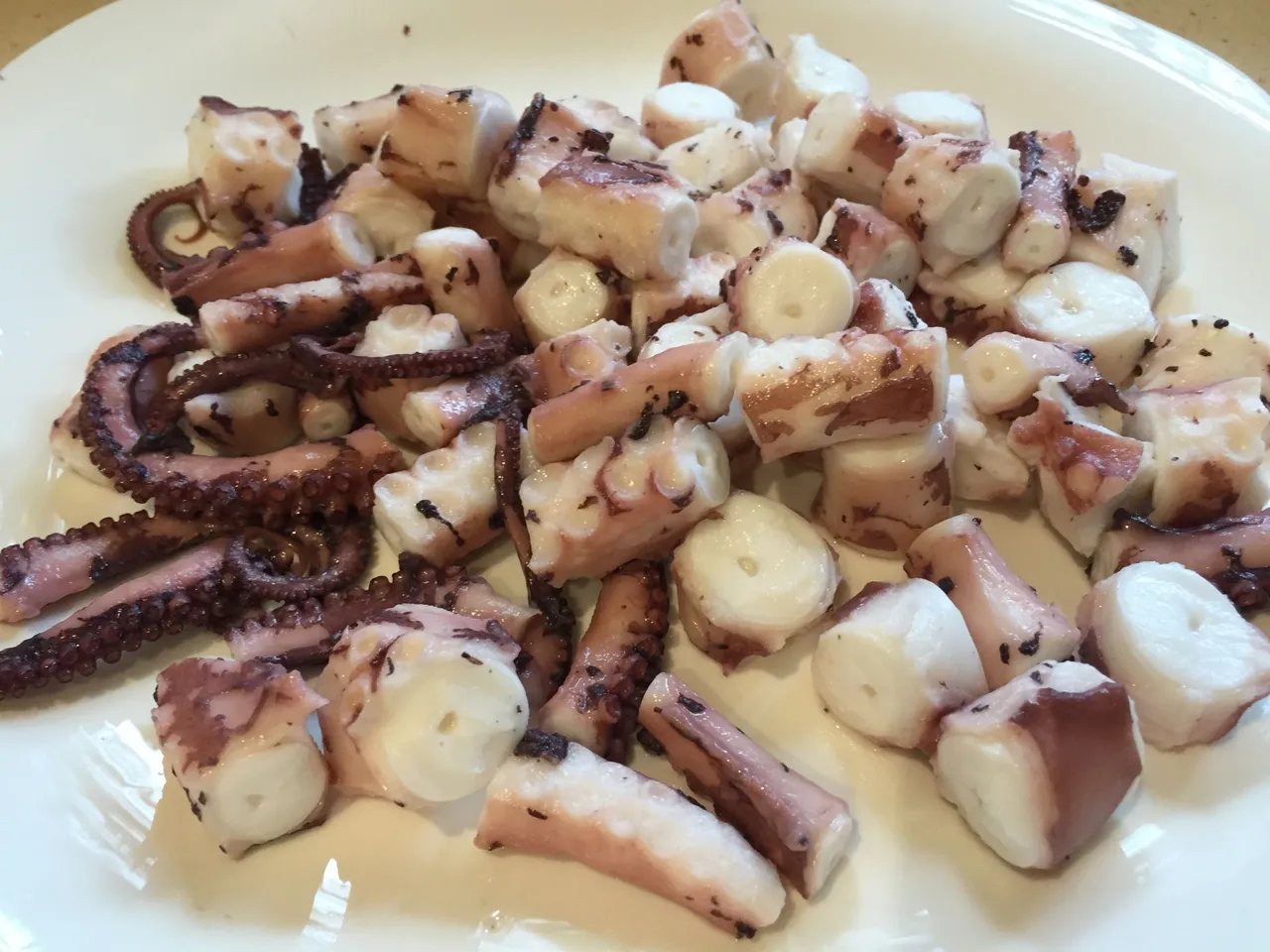

Lo normal es freírlo harineado pero voy a empanarlo para que los más pequeños lo vean más apetecible y así se acostumbren a comer cefalópodos. Para ello necesito huevos y pan rallado. Bato los huevos con un poco de sal y echo los trozos de pulpo.
The normal way is to fry it in flour, but I'm going to bread it so that the little ones find it more appetising and so that they get used to eating cephalopods. To do this I need eggs and breadcrumbs. I beat the eggs with a little salt and add the pieces of octopus.
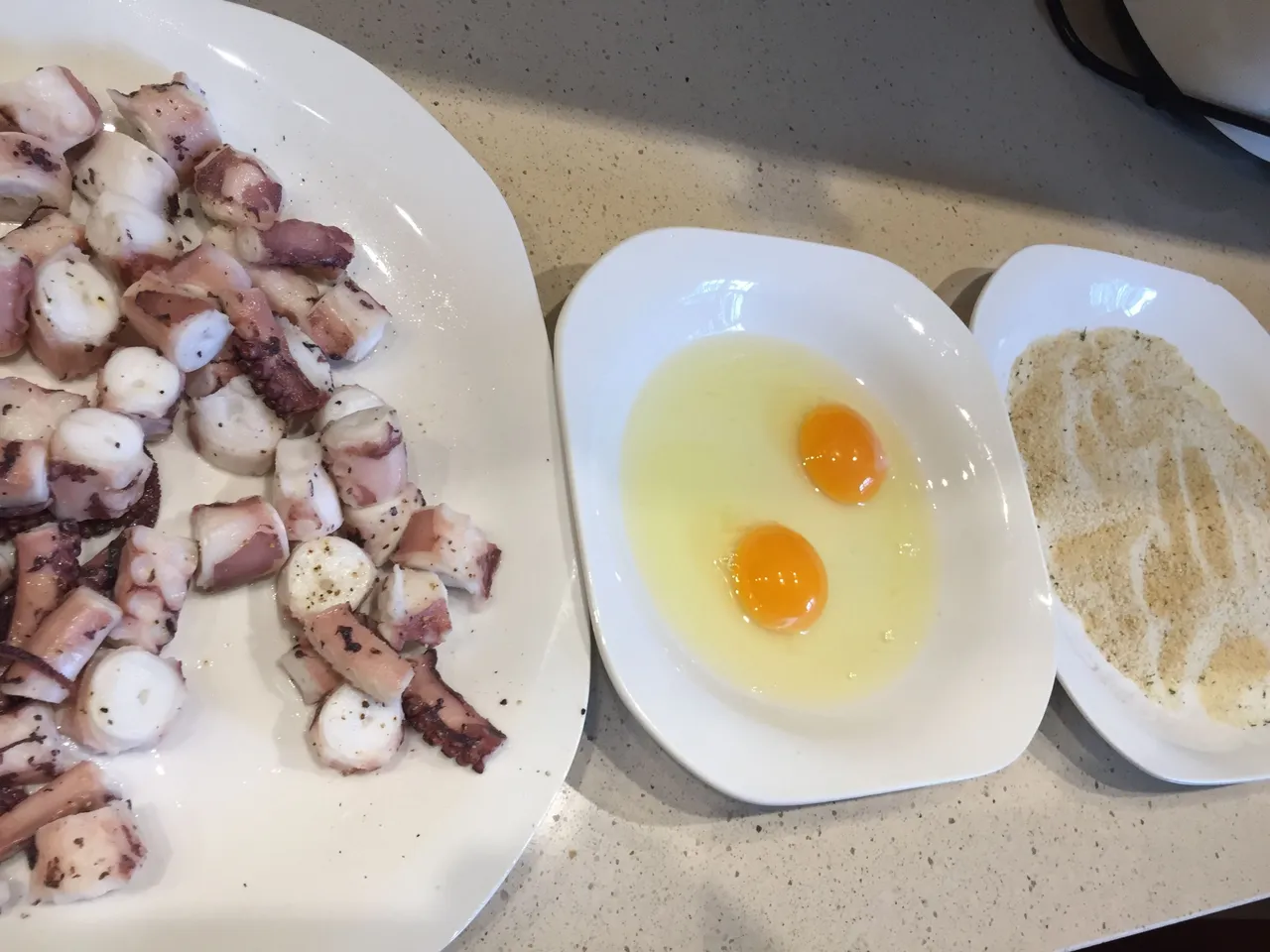

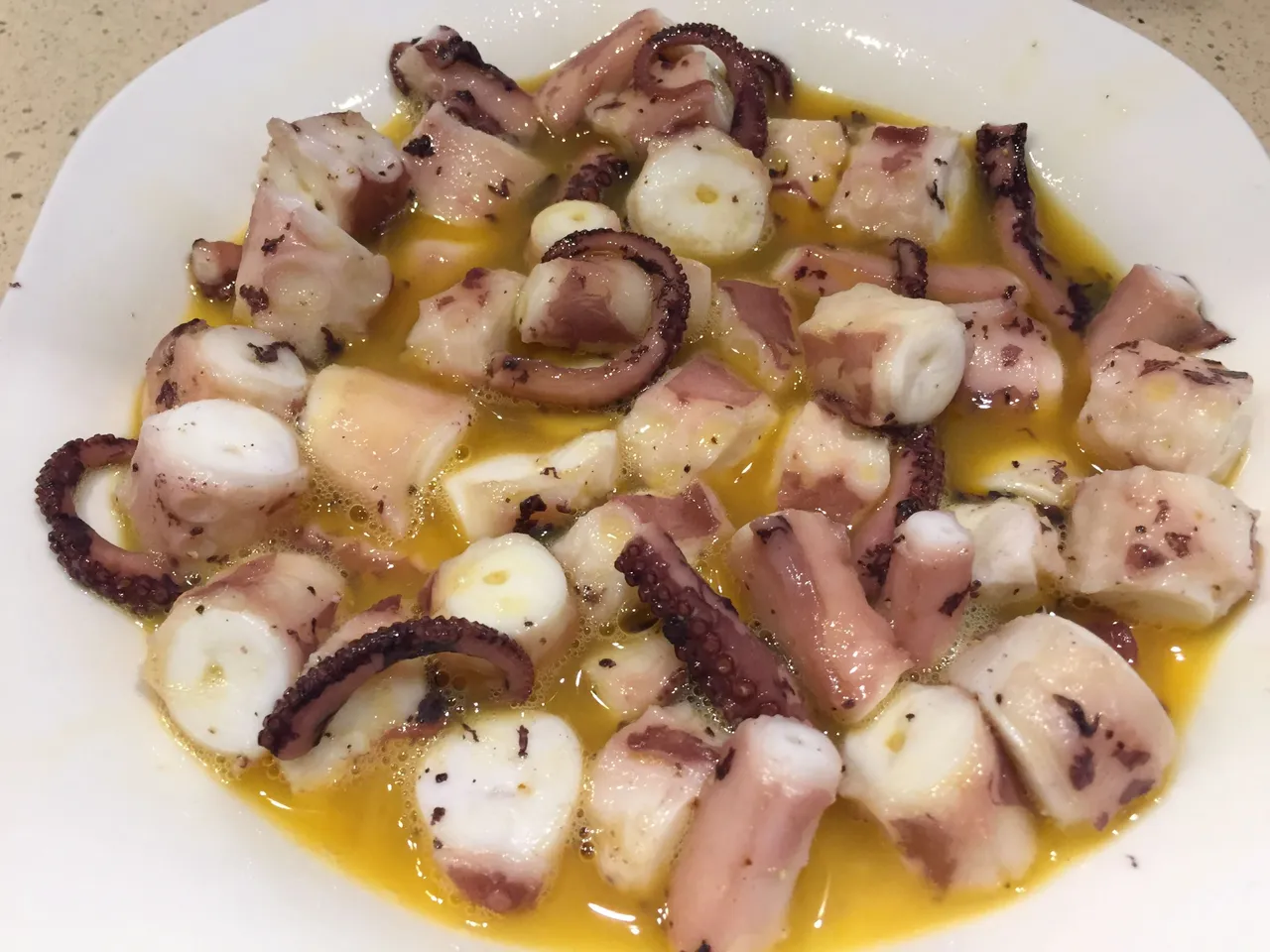

Y seguidamente voy cubriendo cada trocito de pulpo con pan rallado.
Then I cover each piece of octopus with breadcrumbs.
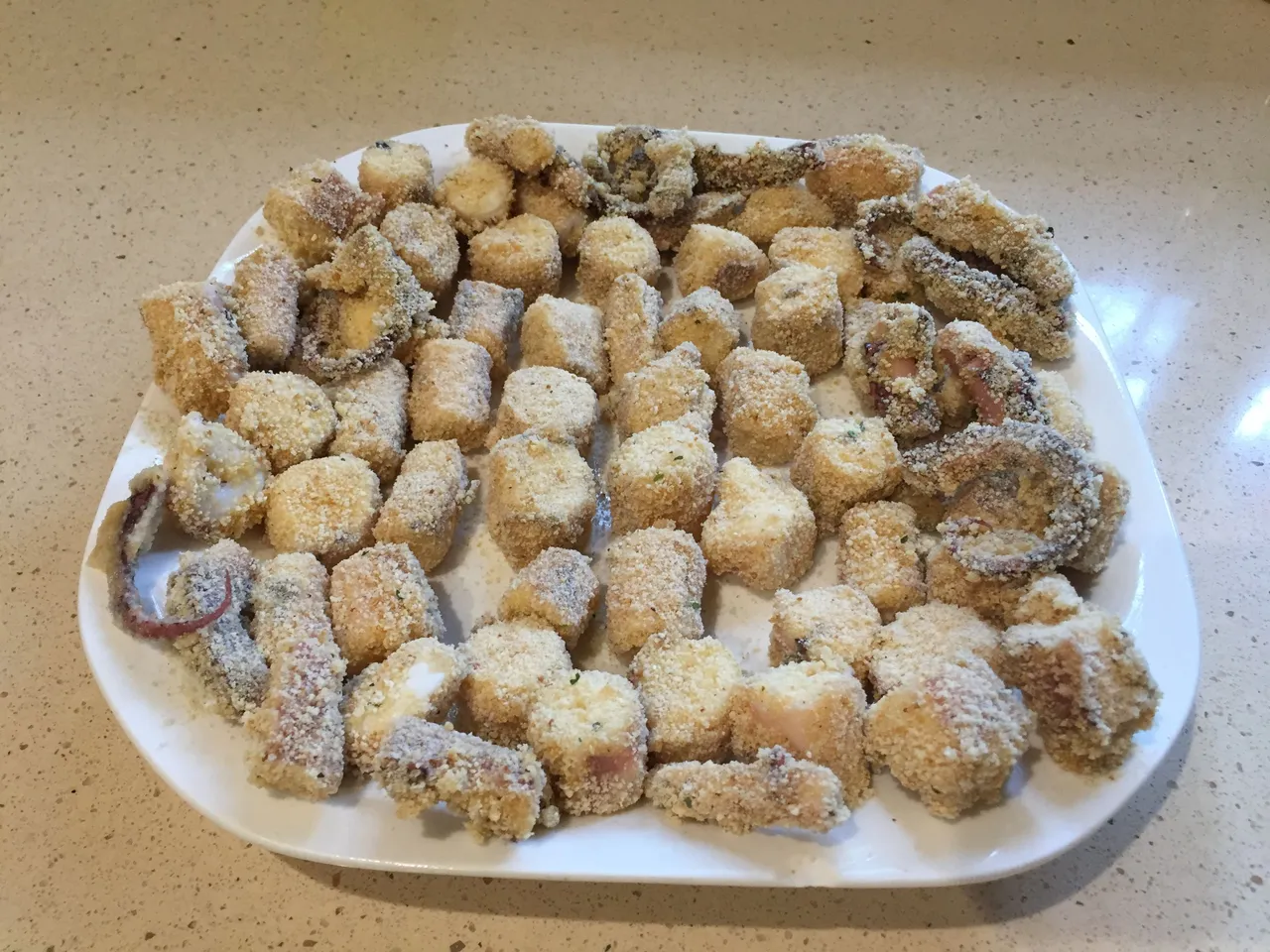

Le echamos sal a gusto y con la sartén con aceite caliente ponemos el pulpo a freír.
Add salt to taste and fry the octopus in hot oil in a frying pan.
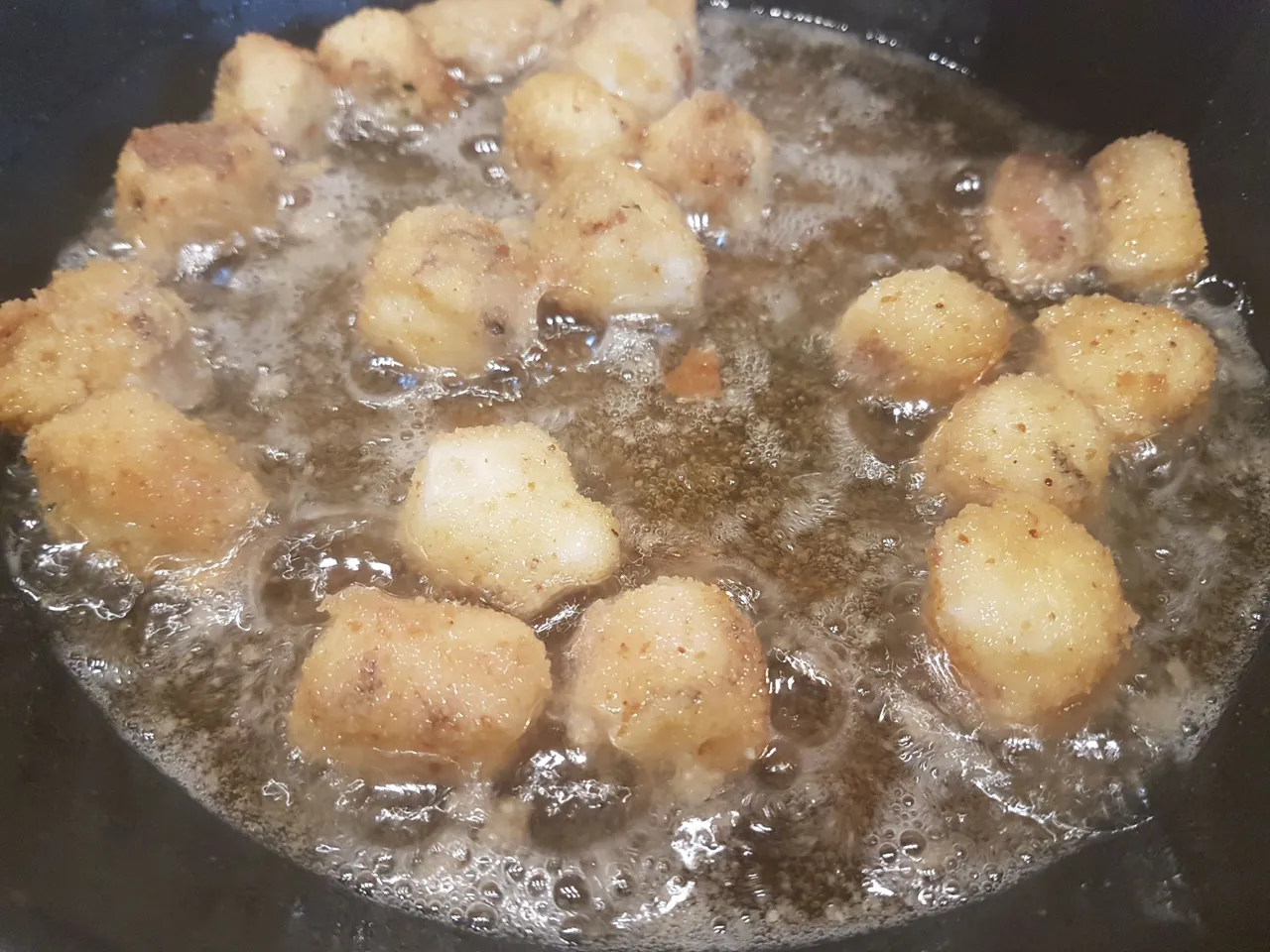

Una vez lo veas dorado, se saca a un plato con papel de cocina para que filtre el aceite sobrante. Si se quiere se puede acompañar con una ensalada de verduras o unas patatas fritas.
Once you see it is golden brown, remove it to a plate with kitchen paper so that the excess oil filters through. If you like, you can serve it with a vegetable salad or some chips.
